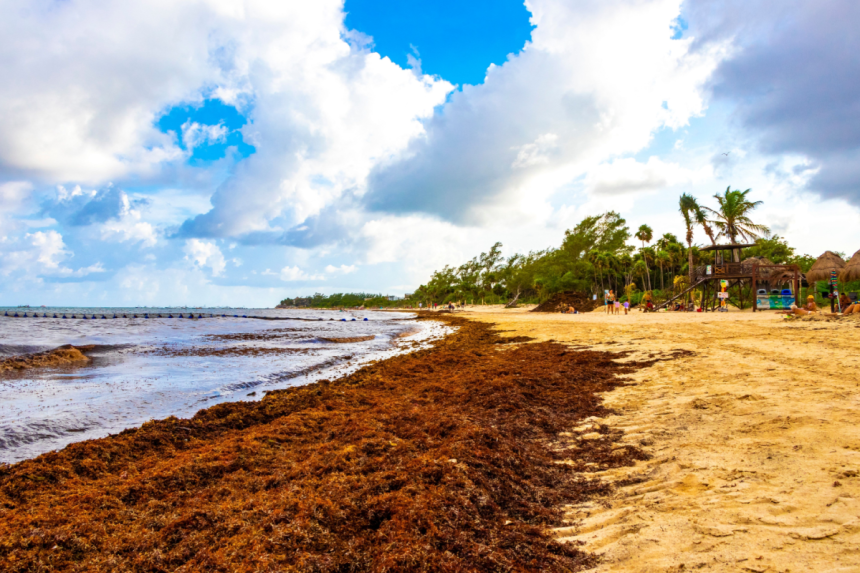Tourism Threatened by Record Seaweed Invasion
Summer in the Caribbean is typically defined by sun and turquoise waters, but in recent years, sargassum has disrupted this image of paradise. Mexican destinations such as Cancun, Cozumel, and Tulum now struggle each year with massive arrivals of this brown macroalgae. Forecasts from the University of South Florida warn that up to 400,000 tons could wash ashore this summer—potentially the worst season on record. The impact is severe: decomposing seaweed releases hydrogen sulfide, methane, and carbon dioxide, while cleanup costs for hotels exceed $100 million annually.
Economic and Environmental Strain
The Inter-American Development Bank estimates sargassum reduces Quintana Roo’s GDP by 11.6 percent. Beyond harming tourism, the algae presents environmental risks as it decomposes, releasing toxic heavy metals such as arsenic and lead. Yet researchers and entrepreneurs argue that, if properly managed, the crisis could be transformed into a renewable energy resource.
From Waste to Biofuel
Engineer Miguel Ángel Aké Madera, founder of Nopalimex, highlights the potential of turning sargassum into biogas. According to his research, processing 500 tons can yield 20,000 cubic meters of biogas—the energy equivalent of 20,000 liters of gasoline. With this, a single day’s harvest could supply the daily fuel demand of an average gas station in Mexico. Other experts, such as Esteban Amaro of the Quintana Roo Sargassum Monitoring Network, support prioritizing energy production over consumer products, citing health risks associated with heavy metal contamination.
Innovation in Construction and Carbon Credits
Researchers at UNAM have developed “Sargapanel,” a construction material made with up to 70 kilos of wet sargassum per unit. The panels are stronger, more flexible, and fire-resistant compared to traditional options, while also recyclable. Producing them could generate significant profits through carbon credits: for every five tons of sargassum processed, one credit worth $10 to $30 is issued. Additional innovations include fire-resistant cardboard (Sargabox) and filters to capture water contaminants. These projects are now being aligned with Quintana Roo’s new Sargasso Comprehensive Sanitation and Circular Economy Center, which will promote biogas, fertilizers, and carbon trading.
A Regional Challenge With Global Implications
The sargassum influx is fueled by warming oceans, fertilizer runoff, and shifting currents, though exact causes remain debated. Neighboring nations like Jamaica and the Dominican Republic are testing biofuel solutions but await Mexico’s lead in scaling operations. Forecasts suggest the phenomenon is unlikely to disappear soon; in fact, ocean records point to rising quantities across the Atlantic. For Mexico, the challenge is urgent but also an opportunity: converting a tourism crisis into a renewable energy industry with global relevance.






